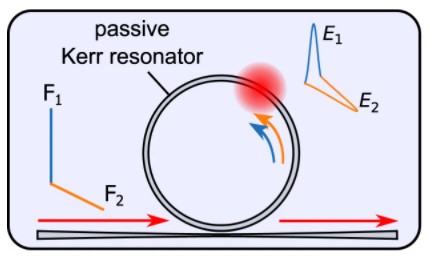First experimental observations of the Spontaneous Symmetry Breaking (SSB) of temporal cavity solitons in Kerr ring resonators
A collaboration between The University of Auckland (New Zealand), the Dodd-Walls Centre for Photonic and Quantum Technologies, the ICB laboratory in Dijon (France), the National Physical Laboratory (NPL), and the University of Strathclyde has led to the first experimental observations of the Spontaneous Symmetry Breaking (SSB) of temporal cavity solitons in Kerr ring resonators.
In 2020, Dr Lewis Hill, a recent PhD graduate from Strathclyde’s Department of Physics, was awarded a scholarship by the Mac Robertson Trust to fund a research visit to the University of Auckland. There he worked with a truly international team, including his Strathclyde supervisor Prof. Gian-Luca Oppo, to study SSB phenomena. The first of two research outputs from this visit has now been published by Nature Communications (G. Xu et al., Nature Comm. 12, 4023 (2021) see: https://www.nature.com/articles/s41467-021-24251-0).

One of the main potential applications of the work is in the improved generation of Frequency Combs – “rulers for frequency measurements”, which won a Nobel prize in 2004, with other potential applications being in telecommunications, data storage, and quantum technologies.
Dr Hill is now continuing his research as a part-time postdoctoral researcher, split between the Max Planck Institute for the Science of Light in Germany, and the CNQO group of the Department of Physics of the University of Strathclyde, while also joining the part-time staff of Strathclyde Doctoral School as the new PGR Development Officer.
July 2021